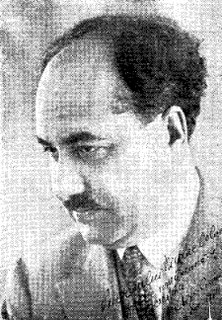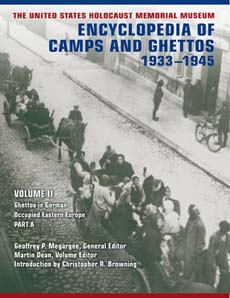Related Research Articles

The Iron Guard was a Romanian militant revolutionary fascist movement and political party founded in 1927 by Corneliu Zelea Codreanu as the Legion of the Archangel Michael or the Legionnaire Movement. It was strongly anti-democratic, anti-capitalist, anti-communist, and anti-Semitic. It differed from other European right-wing movements of the period due to its spiritual basis, as the Iron Guard was deeply imbued with Romanian Orthodox Christian mysticism.

The Romanian Orthodox Church, or Patriarchate of Romania, is an autocephalous Eastern Orthodox church in full communion with other Eastern Orthodox Christian churches, and one of the nine patriarchates in the Eastern Orthodox Church. Since 1925, the church's Primate bears the title of Patriarch. Its jurisdiction covers the territories of Romania and Moldova, with additional dioceses for Romanians living in nearby Serbia and Hungary, as well as for diaspora communities in Central and Western Europe, North America and Oceania. It is the only autocephalous church within Eastern Orthodoxy to have a Romance language for liturgical use.
Clerical fascism is an ideology that combines the political and economic doctrines of fascism with clericalism. The term has been used to describe organizations and movements that combine religious elements with fascism, receive support from religious organizations which espouse sympathy for fascism, or fascist regimes in which clergy play a leading role.

Nichifor Crainic was a Romanian writer, editor, philosopher, poet and theologian famed for his traditionalist activities. Crainic was also a professor of theology at the Bucharest Theological Seminary and the Chișinău Faculty of Theology. He was an important racist ideologue, and a far-right politician. He was one of the main Romanian fascist and antisemite ideologues.

The Holocaust in Poland was part of the European-wide Holocaust organized by Nazi Germany and took place in German-occupied Poland. During the genocide, three million Polish Jews were murdered, half of all Jews murdered during the Holocaust.

Pitești Prison was a penal facility in Pitești, Romania, best remembered for the reeducation experiment which was carried out between December 1949 and September 1951, during Communist party rule. The experiment, which was implemented by a group of prisoners under the guidance of the prison administration, was designed as an attempt to violently "reeducate" the mostly young political prisoners, who were primarily supporters of the fascist Iron Guard, as well as Zionist members of the Romanian Jewish community. The Romanian People's Republic adhered to a doctrine of state atheism and the inmates who were held at Pitești Prison included religious believers, such as Christian seminarians. According to writer Romulus Rusan, the experiment's goal was to re-educate prisoners to discard past religious convictions and ideology, and, eventually, to alter their personalities to the point of absolute obedience. Estimates for the total number of people who passed through the experiment range from at least 780 to up to 1,000, to 2,000, to 5,000. Journalist Laurențiu Dologa estimates almost 200 inmates died at Pitești, while historian Mircea Stănescu accounts for 22 deaths during the period, only 16 of them with documented participation in the "re-education".

The history of the Jews in Slovakia goes back to the 11th century, when the first Jews settled in the area.

Gândirea, known during its early years as Gândirea Literară - Artistică - Socială, was a Romanian literary, political and art magazine.
Holocaust trivialization is any comparison or analogy that is perceived to diminish the magnitude of the Holocaust, the Nazi genocide of six million European Jews during World War II. The Wiesel Commission defined trivialization as the abusive use of comparisons with the aim of minimizing the Holocaust and banalizing its atrocities. Originally, holocaust meant a type of sacrifice that is completely burnt to ashes; starting from the late 19th century, it started to denote an extensive destruction of a group, usually people or animals. The 1915 Armenian genocide was described as a "holocaust" by contemporary observers.
Steven B. Bowman is an American scholar and academic particularly known for his research of Greek and Jewish relations throughout the past three millennia, with emphasis on Byzantine and Holocaust periods. He is a professor of Judaic Studies at the University of Cincinnati, where he teaches a wide range of courses in ancient and medieval Judaic Studies and modern Israel.
The double genocide theory is the idea that two genocides of equal severity occurred in Eastern Europe, that of the Holocaust against Jews perpetrated by the Nazis and a second genocide that the Soviet Union committed against the local population. The theory first became popular in Lithuania in the early 1990s. A more aggressive version of the theory accuses Jews of complicity in Soviet repression and characterize local participation in the Holocaust as retaliation, especially in Lithuania, eastern Poland, and northern Romania.

The relationship between the Romanian Orthodox Church and the Iron Guard was one of ambivalence. The Romanian Orthodox Church promoted its own version of nationalism which highlighted the role of Orthodoxy in preserving the Romanian identity. Starting with the 1920s, the Church became entangled with fascist politics and antisemitism. In this context, the Iron Guard, also known as the Legion of the Archangel Michael, a fascist movement founded in 1927, became very influential with church grassroots. Numerous rank-and-file priests joined the Iron Guard ranks and actively supported its policies; so did a minority of influential high-ranking clergymen such as Nicolae Bălan or Vartolomeu Stănescu.

Gheorghe Buzatu was a Romanian historian, politician, and professor of history at the University of Iași. Elected to the Romanian Senate for Iași County in 2000 on the lists of the extremist Greater Romania Party, he served as a vice president of that body over the next four years. He is best known for his controversial publications about the Jews and the Holocaust in Romania during World War II.
The Yad Vashem International Book Prize for Holocaust Research is an annual award by Yad Vashem in recognition of high scholarly research and writing on the Holocaust or its antecedents and aftermath published two years preceding the year of the award. It was established in 2011 in memory of Abraham Meir Schwartzbaum, Holocaust survivor, and his family who was murdered in the Holocaust.

The Holocaust in Bulgaria was the persecution, deportation, and annihilation of Jews between 1939 and 1944 in the Kingdom of Bulgaria and Bulgarian-occupied Yugoslavia and Greece during World War II, arranged by the Nazi Germany-allied government of Tsar Boris III and prime minister Bogdan Filov. The persecution began in 1939, intensified after early 1941 and culminated in March 1943 with the arrest and deportation of almost all – 11,343 – of the Jews living in Bulgarian-occupied regions of Macedonia, Thrace, and Pomoravlje. These were deported by the Bulgarian authorities and sent on through Bulgaria to the Treblinka extermination camp in German-occupied Poland.
Geoffrey P. Megargee was an American historian and author who specialized in World War II military history and the history of the Holocaust. He served as the project director and editor-in-chief for the Encyclopedia of Camps and Ghettos, 1933–1945 produced by the United States Holocaust Memorial Museum. Megargee's work on the German High Command won the 2001 Distinguished Book Award from the Society for Military History.

Encyclopedia of Camps and Ghettos, 1933–1945 is a seven-part encyclopedia series that explores the history of the concentration camps, ghettos, forced-labor camps, and other sites of detention, persecution, or state-sponsored murder run by Nazi Germany and other Axis powers in Europe and Africa. The series is produced by the United States Holocaust Memorial Museum (USHMM) and published by Indiana University Press. Research began in 2000; the first volume was published in 2009; and the final volume is slated for publication in 2025. Along with entries on individual sites, the encyclopedias also contain scholarly overviews for historical context.

Alexandru Cecal was a chemist, professor at the Alexandru Ioan Cuza University of Iași, Romania, known especially for his contributions in the field of radiochemistry.
Stefan Ihrig is an academic, author, and speaker. He is professor of history at the University of Haifa and director of the Haifa Center for German and European Studies. His research interests are European and Middle Eastern history, with a focus on media and political and social discourse. His 2014 and 2016 books dealing with German-Turkish history and entanglement have elicited critical praise. He is also an editor of the Journal of Holocaust Research published by the University of Haifa and has contributed articles for HuffPost, Tablet, Haaretz, and History Today, among other publications.
Diana Dumitru is a Moldovan historian. She is considered the leading scholar of the fate of Bessarabia's and Bukovina's Jews during the Holocaust.
References
- ↑ Bergen, Doris. "Article Note: Ion Popa, "Sanctuary from the Holocaust? Roman Catholic Conversion of Jews in Bucharest, Romania, 1942" – Contemporary Church History Quarterly". 23 (4).
{{cite journal}}: Cite journal requires|journal=(help) - ↑ "Dr. Ion Popa". IRH-ICUB. 31 May 2019.
- ↑ "All Fellows and Scholars: Ion Popa". United States Holocaust Memorial Museum. Retrieved 2 November 2020.
- ↑ Kelso, Michelle (2020). "Ion Popa, The Romanian Orthodox Church and the Holocaust". Journal of Contemporary History. 55 (3): 694–696. doi:10.1177/0022009420921295g. S2CID 220605997.
- ↑ "Fisher on Popa, 'The Romanian Orthodox Church and the Holocaust' | H-Nationalism | H-Nationalism | H-Net". networks.h-net.org. Retrieved 2 November 2020.
- ↑ Sanzenbacher, Carolyn (2020). "The Romanian Orthodox Church and the Holocaust: by Ion Popa, Bloomington, Indiana University Press, 2017, 238 pp., $50.00 (hardback), ISBN: 978-0-253-02989-8". Holocaust Studies. 26 (1): 123–126. doi:10.1080/17504902.2019.1615182. S2CID 182914471.